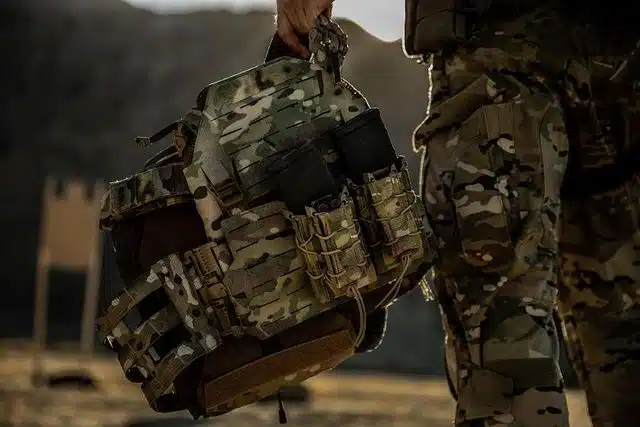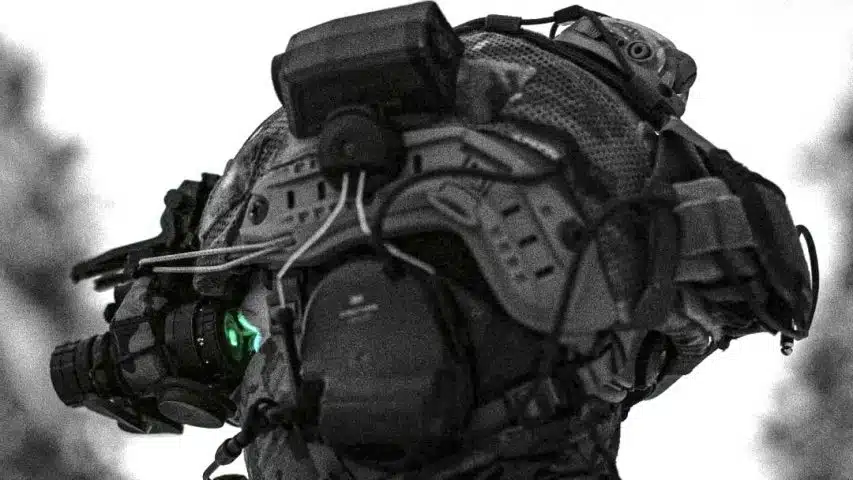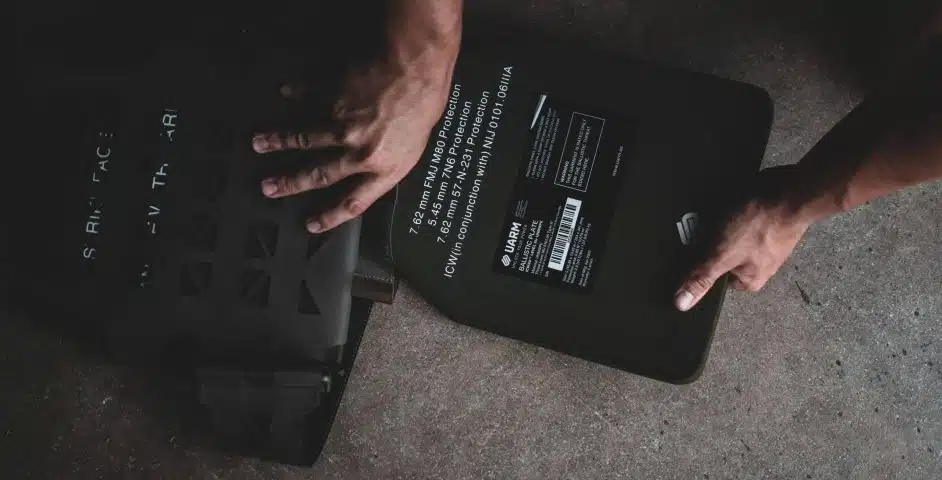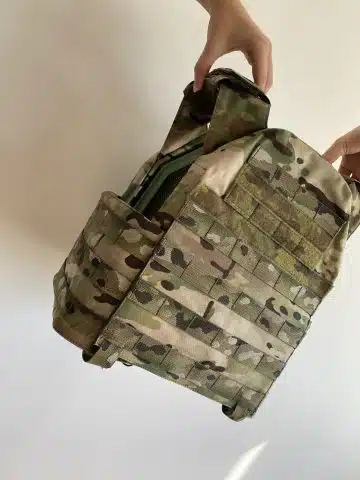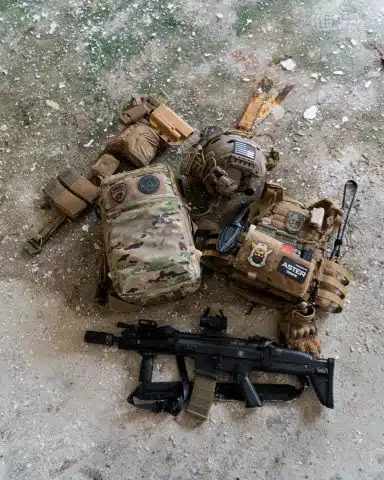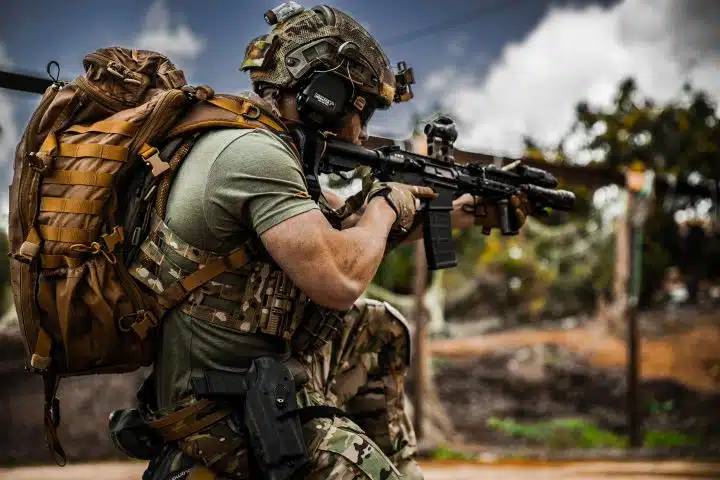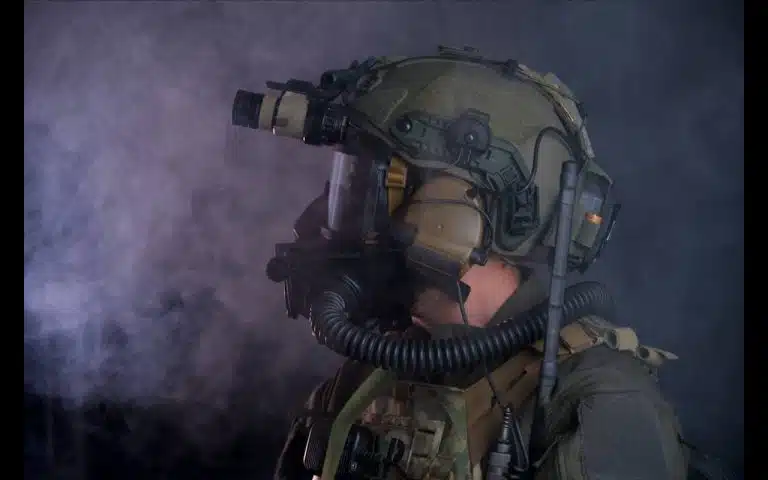Although plate carriers are made to be quite sturdy and durable, they still need regular maintenance if you want them to last a long time. To take care of the plate carrier you will need to know about the different parts, how to clean those parts, and ideally how to mend small nicks that may appear after some missions.
Generally, there are three things that you should be wary of:
- Moisture
- UV Exposure
- Lateral rips
Taking Care of Ballistic Hard Plates
The most important and also the easiest part when you want to clean your body armor is cleaning the ballistic plates. Because they are so solid, there are few things that can affect them negatively. To wash plate carrier plates, you will need to focus on which coating is on the top, but otherwise, the process is quite simple. For UHMWPE plates the coating will usually be fabric, so it is best to use only a moist towel and mild soap. Using more water won’t damage the plate, but you will need to remember to dry them properly. For metal plates (both steel and aluminum) as well as ceramics you will need a sponge and some regular hand soap and the drying and rinsing is much more important than the washing. Also, if your plates are frequently in the sun, wind, or sub-zero cold, you might consider coating the plate with a protective lacquer for those conditions. Overall, if you have a lot of plates that you need to carry around, investing in a dedicated plate case is not a bad idea. This will make transport easier and would serve as perfect storage when the plates are not in use.Storage and Transportation
Adequate storage is one of the biggest issues when it comes to plate carriers. A good plate carrier will be quite firm and that means that you will need to fold and store it in its natural position, trying not to make weak points in either the vest or the cummerbund. Ideally, you will want a dedicated bag to store the vest and the cummerbund separately, especially if you won’t be using them for longer. Something to protect it from UV rays and moisture will ensure that your PC lasts for years if not decades. Otherwise, be sure to detach the cummerbund and lay it over the vest to prevent those folds from forming and making the PC uncomfortable at times. Also, while it is not important to protect the carrier from blunt impact, small nicks, scratches, and cuts will make it wear out much faster. This is the opposite of how you would store plates. A simple nylon bag would stop this completely, but whatever you don’t transport your carrier outside of a bag if not wearing it.Protection from the Elements
For carriers, the biggest enemy is moisture and lateral micro-cuts. Everything else, including UV radiation, frost, and heat won’t do a lot of damage if not combined with the first two. When protecting against moisture we need to remember that simply being outside in the rain, or even drugging through water won’t damage the carrier. Rather, slow and humid moisture will creep between the fibers and garner bacteria that will eat on the fibers and dissolve them over time. That time is of the essence because moisture is just a conduit. If you dry up your carrier once you are done, and especially if you spray it with an alcoholic solution and pad it dries there will be no effect. For cuts, it is a similar issue because materials like Cordura are very resistant to slashes and few knives would even pass through more than a few fibers. But, if the carrier is exposed to something like sandstorms, millions of miniature cuts will degrade the integrity of the PC. There are now some high-tech solutions on how to deal with this, but the simplest and most cost-effective is to wear a poncho when in such conditions as that will safeguard your body as well. And, when the PC is not in use you can keep it in a bag.Cleaning and Maintenance
The best tool for regular plate carrier maintenance is bottled air. A small compressor that would blow off all of the moisture and small dirt will do wonders for clean body armor. You can do this every time you return from a mission with a simple visual inspection. But, you will also want to know how to clean plate carrier sets that have been exposed to more dirt and more damage, especially in humid conditions. For that, you will need only four things:- Warm water (~90 degrees)
- Mild hand soap
- Cotton washcloth
- Soft toothbrush
